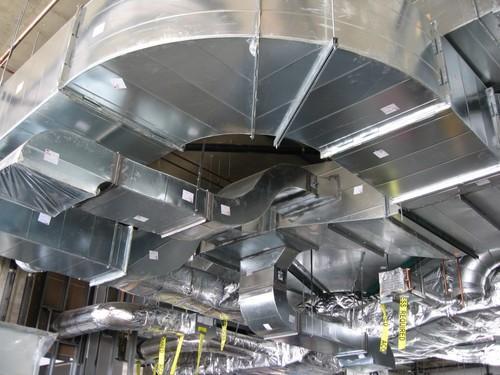Changing The Airflow Direction In An Hvac Duct
Heating, ventilation, and air conditioning (HVAC) systems circulate air conditioning through a network of ducts throughout the home or building. Residential HVAC systems like in Blackhawk supply send air to different zones or areas within a home. Depending on the design of the HVAC system, manual or automatic controls make it possible to change the direction of airflow within the ductwork.
Manual Controls
Consult your HVAC system manual to determine the zone layout for the system. In older homes, duct lines exiting the main furnace unit supply air to specific areas or zones within the home. Hand controls – also known as dampers – consist of small hand-sized levers or valves that sit on the outside wall. Manual controls appear in the area where the duct lines branch off from the main system.
Change the airflow direction within a duct line by turning the valve or lever on the manual control. The direction of the valve handle determines how much air conditioning each zone receives. Turning the crank to a position parallel to the duct line will fully open the damper. Rotating the crank to a position perpendicular to the duct closes the line and blocks airflow. Handle positions that lie between open and close provide more or less air conditioning to specific areas.
Open or close the mechanical deflector connected to a room’s air supply valve. Supply air valves control the flow of air within specific rooms. Record open shutters, close ventilation doors, and increase or decrease the amount of air flowing into the room. Air supply registers work in conjunction with manual duct registers.
Automatic Controls
Locate the thermostat zones on the HVAC system layout. The thermostat in each zone regulates the airflow in that specific zone. The thermostat has a control switch that automatically opens and closes the motorized damper doors within each zone’s duct line.
Move the thermostat control to the “On” position to activate the motorized damper control mounted in each duct. Thermostats can have additional settings that leave the damper doors partially open. In effect, thermostat settings change airflow direction by regulating the amount of air that enters a zone. A fully enclosed damper allows other zones or areas within a house to receive more air conditioning.
Increase or decrease the amount of air flowing into an area with the thermostat blower control switch. This switch activates a fan unit connected to the duct line of a given zone. The blower increases the airflow rate within a duct, even if the damper door is fully or partially open.
Tips And Warnings
Create balanced airflow in all areas of your home by determining which thermostat or manual settings deliver equal amounts of air to different areas of the zone.
Lack of airflow in a particular zone could indicate a faulty dampening motor for automatic controls or an improperly mounted lever or valve for manual controls.


Comments are closed.